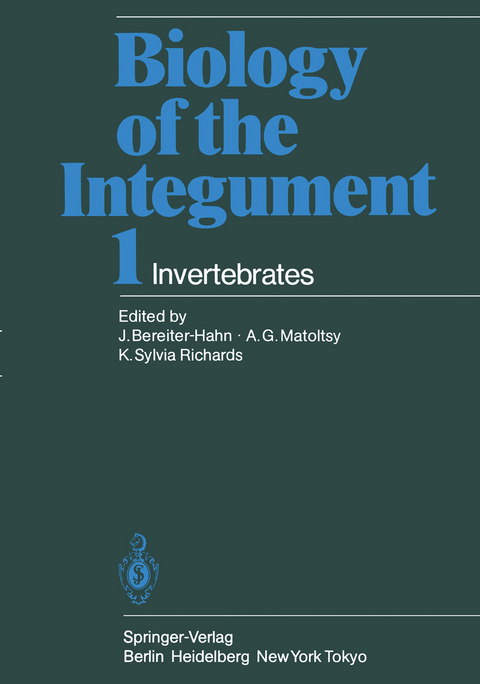
Biology of the Integument
Springer Berlin (Verlag)
978-3-642-51595-8 (ISBN)
I Introduction, Intercellular Junctions and Cilia.- 1 Introduction.- 2 Intercellular Junctions.- 3 Cilia.- II The Diploblastic Level.- 4 Introduction to the Diploblastic Level.- 5 Cnidaria: Cell Types.- 6 Cnidaria: Cnidae.- 7 Cnidaria: Secreted Surface.- 8 Cnidaria: Permeability, Epidermal Transport and Related Phenomena.- 9 Ctenophora.- III Acoelomata.- 10 Turbellarian Platyhelminths.- 11 Parasitic Platyhelminths.- 12 Platyhelminth Host-Parasite Interface.- 13 Nemertea.- IV Pseudocoelomata.- 14 Nematoda.- 15 Acanthocephala.- 16 Minor Pseudocoelomates.- V Annelida.- 17 Epidermal Cells.- 18 Chaetae.- 19 Cuticle.- 20 Permeability and Epidermal Transport.- VI Annelid-Related Phyla and Cuticle Evolution.- 21 Echiura and Sipuncula.- 22 Pogonophora.- 23 Evolution of the Cuticle in the Lower Eumetazoa.- VII Mollusca.- 24 Epidermal Cells.- 25 Shell.- 26 Permeability and Epidermal Transport.- VIII Arthropoda.- 27 Epidermal Cells.- 28 Chemo-, Hygro-, and Thermoreceptors.- 29 Mechanoreception.- 30 Cuticle: Biochemistry.- 31 Cuticle: Organization.- 32 Cuticle: Mechanical Properties.- 33 Cuticle: Formation, Moulting and Control.- 34 Cuticle: Ecological Significance.- 35 Cuticle and Insecticides.- IX Arthropod-Related Phyla.- 36 Onychophora.- 37 Pentastomida.- 38 Tardigrada.- X Minor Coelomate Phyla.- 39 Lophophorates.- 40 Chaetognatha.- XI Echinodermata.- 41 Epidermal Cells.- 42 Permeability and Epidermal Transport.- XII The Protochordates.- 43 Hemichordata.- 44 Urochordata.- 45 Cephalochordata.- Index to Genera.
| Erscheint lt. Verlag | 20.7.2012 |
|---|---|
| Zusatzinfo | XVI, 844 p. |
| Verlagsort | Berlin |
| Sprache | englisch |
| Maße | 170 x 244 mm |
| Gewicht | 1458 g |
| Themenwelt | Naturwissenschaften ► Biologie ► Zellbiologie |
| Naturwissenschaften ► Biologie ► Zoologie | |
| Schlagworte | biochemistry • Biology • Cell • Cutide • Cytoskeleton • Enzyme • epidermis • Evolution • host resistance • Insects • Integument • Membrane • Morphology • Parasites • Regeneration • Regulation • resistance • Wirbellose |
| ISBN-10 | 3-642-51595-9 / 3642515959 |
| ISBN-13 | 978-3-642-51595-8 / 9783642515958 |
| Zustand | Neuware |
| Haben Sie eine Frage zum Produkt? |
aus dem Bereich


